these gestures of memory …
When Gladys Kalichini arrived at the University of Rhodes in South Africa this February to do research for her art history Ph.D. thesis, it was just in time as the border closed literally days after her arrival due to the Corona outbreak.
So, there was no way of going back to Berlin, where she had been in an artist residency at Künstlerhaus Bethanien, or to prepare her pending solo show on site of the residency.
For Kalichini, what started and what was planned as a short trip to South Africa became both an unexpected experience and a challenge. This was not only in terms of preparing the exhibition from a distance, but also regarding the actual producing of the works on the subject of the duality of memory and history, and ideas about remembering, forgetting and mourning women freedom fighters who resisted colonial rule in Northern and Southern Rhodesia (now Zambia and Zimbabwe) in the 1960s and 1980s.
But she succeeded, and one of the works she produced during her enforced extended stay in South Africa was the four channel video “… these practices are done in sharing her stories” (2020), which focuses on how women tell stories about women, and involved asking three friends to join her and become part of the artwork.
The setting accentuated the idea of sharing, collaboration and allowing the whole dynamic of the work to develop so it could take its own form.

Another work created during the long wait in South Africa is “… these wreaths are laid in honour of her memories (2020), in which Kalichini made hundreds of black roses by hand from crepe paper. As she recalls, the process of consciously taking the time to make each individual rose made her wonder about how we mourn or cope with mourning.
Indeed, in a previous project, “ChaMoneka: UnCasting Shadows (2017)”, for example, she had also explored the erasure and silencing of women within Zambian history and collective memory by literally un-earthing their stories from dusty archives, thus bringing them back to light and making them visible again — as she is now also seeking in her Ph.D. thesis.
While Gladys Kalichini is aware that she won’t change the dominant narrative around these women in today’s Zambia or Zimbabwe, she says,
if we listen more carefully, with a bit more intent, we can hear other voices. Even in silence. Sometimes silence can speak loudly. You just have to pay attention to the silence or see beyond the invisibility. That’s what I am trying to do.

Works like these need and deserve time not only for its preparation but especially for reflection. Looking back, I highly doubt this conversation would have been “right” had it been done the usual way within a week or two.
I originally wanted to interview Gladys Kalichini in the spring during a studio visit, but in the end this wasn’t possible due to the circumstances caused by Covid-19.
Shortly before her show opened in June, I was able to join an amazing artist talk held via Zoom by Gallery 51 to gain further insights and a better idea of Gladys` meaningful work.
Parts of this work — reflections and processes about mourning — became all of a sudden very real and personal after I experienced a bereavement myself in July that put everything into question and to a halt.
In retrospect the time it took seems justified and yes, honorable. The freedom fighters (or “Women of Substance” as Kalichini rightly calls them), that were focus of her solo show fought at the forefront for freedom and mourning the ones who have since died is a process that takes time. You can’t rush it.
The stories of these women have been silenced and diminished so many times, we now want to give them the time they deserve.
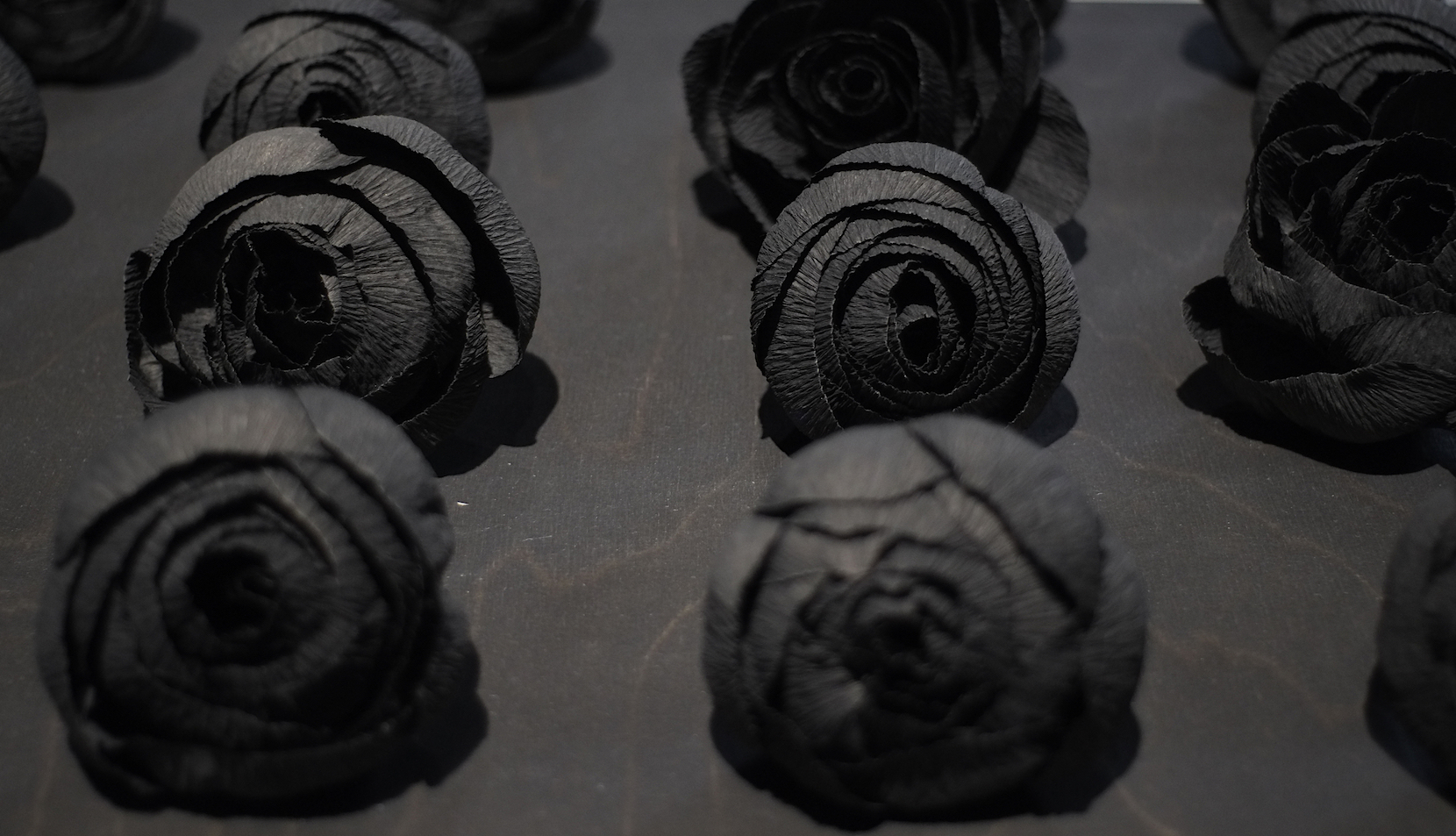
Painting Experiences
Gladys, you work in different mediums, and have said that that depends on how you feel that day — a notion I really can relate to. Can you tell us about your beginnings of working as an artist?
I started off as a painter and my Master of Fine Art was focused largely on painting. Over the past few years I have found that I particularly enjoy the process of making a work if it spans over a period of time.
I am not quite sure which medium comes naturally; I suppose painting because this is what I studied. I like working with fabrics and different materials.
And can you tell us which medium came naturally to you first?
This is a rather difficult question for me because I am really intrigued by a variety of things. Sometimes I look at a photograph, fixate on it and then somehow it translates into work.
On these occasions I would say transforming materials is what I am drawn to. Other times a small detail doesn’t work out at first, but then after a while that changes, so then I like that medium.

For instance, the white flowers in the show at Künstlerhaus Bethanien right now, I first made them as practice then I was unsure of the result. For months, I wasn’t sure how they would exactly fit in the rest of the installation. Then, while during installation, I liked them again and thought I like the idea of making things.
Generally speaking, what I would say is that I paint experience using different materials.
Bessie Chikamoneka Kankasa
In your work you have been especially focusing on the female freedom fighters involved in Zambia and Zimbabwe’s struggle for independence. Have you ever had the chance to meet any of them and where did this journey begin for you? I’ll begin with Bessie Chibesakunda Kankasa.
I have met and had conversations with Bessie Chibesakunda Kankasa in 2016. Luckily, she was welcoming and gracious enough to allow me to record and video some of the conversations. I actually met her through the archives of the United National Independence Party of Zambia.

Every time I went there, they told me that the archival material was boxed up and that I couldn’t access it. Then one day they said if I was really interested they could ask her to talk to me. We called her and she agreed, saying I could come over to her residence the same day. So, I went, but it wasn’t really the first time I met her, as I had seen her at other events before.
But it was our first one-on-one conversation. She invited me over again, and I showed up with an artist friend to assist me with recording. This is how I developed a communication with her until she passed away in 2018.
A photo of her funeral shows women laying wreaths on her grave, which is what I referenced in my last exhibition at Künstlerhaus Bethanien.
Tracking down Senior Chieftainess Nkomeshya Mukamambo II

I believe you know Nkomeshya Mukamamo II ?
Yes, I have met Senior Chieftainess Nkomeshya Mukamambo II several times, but not so often on a one-on-one basis.
As in the case of Kankasa, it is possible to see and meet her at events in Zambia, but if you want a one-on-one meeting you first have to contact her PA, who asks why and many other questions.
And if the PA eventually agrees, you have to show up with gifts and dressed in a particular way.
Women usually have to wear a chitenge – which is how people refer to African print.
In Zambia of course we just call it chiitenge, and it is worn at many occasions ranging from childbirth and weddings to funerals, and also when you are home just doing nothing.
To make a long story short, I tried to go the whole PA route, but that was not really successful because the PA said he was unwell, and the process seemed to be getting too long because I had to travel.
Photo: Senior Chieftainess Nkomeshya Mukamambo II
When my mother noticed I was getting impatient one morning, she said she knew where the Nkomeshya resided when she is not at her palace.
So, my mother drove me to her house, and we showed up.
When we arrived, we met her daughter and she said we could go in and talk, she seemed really excited and was keen and positive about the idea of highlighting women freedom fighters. She mentioned that the Nkomeshya was actually preparing to go to a funeral that morning but that we could wait for her.
She came out dressed in black, (I actually found this interesting, and it somehow spilled into the work, the aesthetic of making black work). She came and we spoke for a little while and then she went to the funeral.

What about Margaret Dongo, Joice ‘Teurai Ropa’ Mujuru, Alice Lenshina and Magdalena Mumba?
I have not met Dongo or Mujuru, although they are still alive. Naturally I have never met Chikamoneka or Lenshina because they passed way before I was born. I only know them through photographs and stories.
I am in contact with Magdalena Mumba’s great granddaughter, and Chikamoneka’s niece/daughter. I traced these two from the comments they made on a blog about women freedom fighters in Zambia.
I saw that they had implied some sort of relationship and just google searched them. It turned out they were both on Facebook and so I sent them friend requests and they replied. Chikamoneka’s relation sent a phone number and we spoke on the phone and have continued communicating since.
I really appreciate this because the conversations with them about these women are more personal and provide insights into their stories beyond the character of a liberation hero.


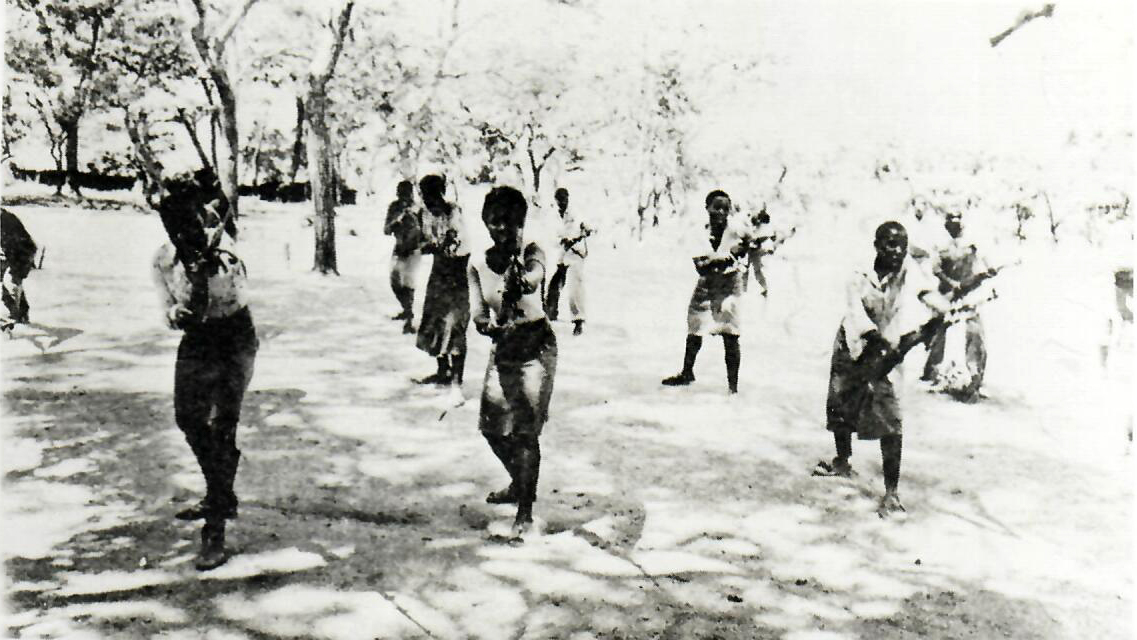


To come aback to Senior Chieftainess Nkomeshya Mukamambo II, she seems to be an extremely impressive and inspiring woman. I have read that she has been a chieftainess in the area since 1976 and that she is the second woman since the 19th century to be Nkomeshya after Mukamambo I, who is mythologized as having spiritual powers that allowed her to change her physical form and veil her people to protect them from enemies. I would think this element plays a big role in the perception her people have of her?
Well I think firstly most of the women whose stories my work engages with have impressive histories or roles that they have performed within the context of Zambia and Zimbabwe.
Of course, I try to take care when dealing with these stories that I do not begin to make spectacles of their stories, or fetishize with ideas about women being extraordinary in a way that could easily become problematic.
My starting point is that these women are people with private, social and political lives, that their stories in some ways also have their own urgency.

Pulling down the clouds & riding on crocodiles
For example Senior Chieftainess Nkomeshya Mukamambo II is the ruler of the Soli people of the Chongwe District in Lusaka Province, and her palace is in the district. She resides between the palace and her private residence.
Nkomeshya Mukamambo is a title; her actual name is Elizabeth Mulenje. In Zambia most people know her for two roles mostly, her role as a member in the ministry and house of chiefs (which is like an official government role) and as a ruler of the Soli people and facilitator of the Chakwela Makumbi ceremony (which literally translates to ‘pulling down the clouds’ (a traditional or customary role).
During Chakwela Makumbi, she communicates with ancestors about the rains so that her people can plant and harvest crops.
She also usually plants the first seeds of the season. The ceremony is quite elaborate and people travel from all over the country to participate. The tradition of such festivals in Zambia is quite elaborate and is also one of the ways in which we perform memory.
Other ceremonies include Kusefya pa Ng`wena (‘riding on crocodiles‘, Kuomboka, which celebrates the Litunga (king) of the Lozi people and various others.
As you can see, this is a whole topic in itself, and as we have quite a few such ceremonies, I thought I’d give you a short insight.


Chimurenga (war of liberation) initiated by female freedom fighters
But my main interest in Mulenje’s narrative is her role in the Zambia’s independence which is what is invisible to the public eye. Part of the country’s independence struggle involved a lot of traditional leaders, but the way in which it is memorialised in the archives and in public is that it focuses on the political aspect.
Some of the other women whose narratives are complex in a similar way to Mulenje’s, for example, are Alice Lenshina and Nehanda Charwe Nyakasikana (Mbuya Nehanda), who is believed to have been a spirit mediun (svikoro),
and of course spirit mediums have more of a cultural role in maintaining the well being of the people around them.

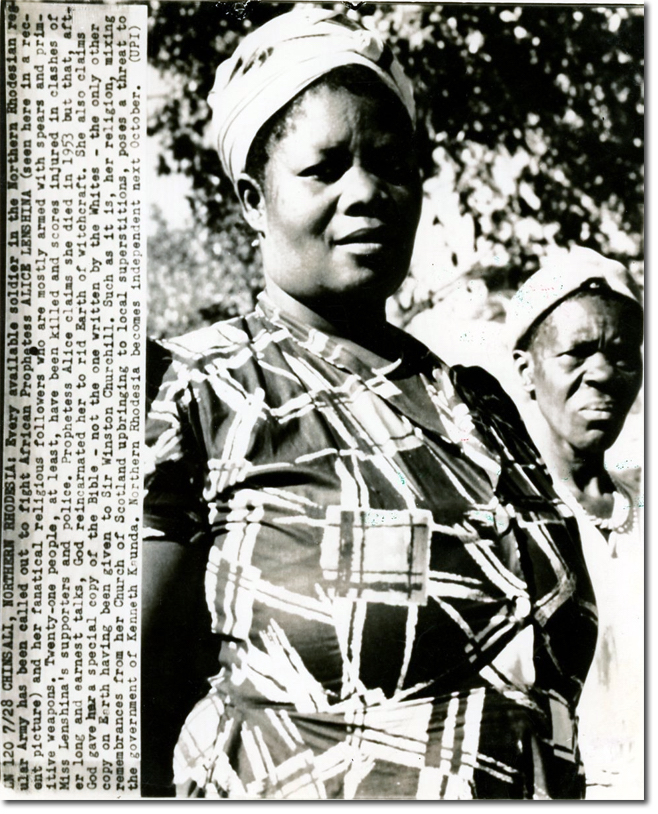
But also she stimulated the very first chimurenga (war of liberation) which can be argued to have influenced the second chimurenga decades later which eventually transitioned into Zimbabwe’s independence struggle.
Lenshina led a whole section known as the Lumpa movement with thousands of followers in the colonial era, she baptised them and led them.
They clashed against colonial authority, and when they did not agree with the independence party they stood their ground too.
Photo: Alice Lenshina

Another female freedom fighter, Joice ‘Teurai Ropa’ Mujuru, shot down a helicopter in the Rhodesian bush war.
Julia Chikqmoneka undressed in public (undressing in public within this context was usually meant to curse) during a protest against a British proposed constitution.
I think each of these women‘s narratives are impressive in some shape or form. Which is why they intrigued me in the first place.
I am not really sure how to tell just one of their stories within a short text
Photo: Joice ‘Teurai Ropa’ Mujuru
How deep you want to go? The reality of working in archives.
Your work involves going into many archives, all very different. Can you describe the feeling and sensations of being in the middle of all these documents and history? I imagine it to be a workplace that is rich but also lonely, and focused but also chaotic.
For me it is really a plethora of feelings, but I would not say that I find it lonely. I think it is probably important to consider the nature of the archives I go to and the contexts in which they exist. Of course it is exciting in some sense to be around a lot of documents that have historical significance, but it can also be overwhelming.

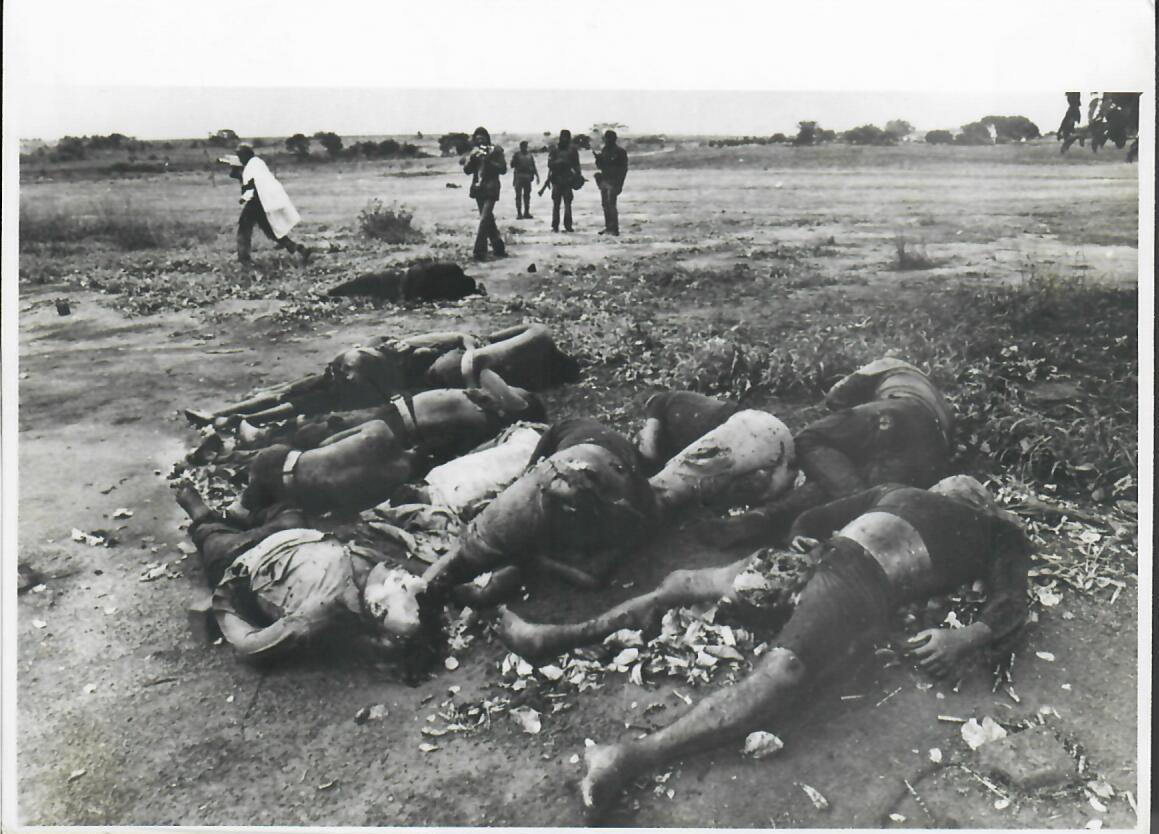
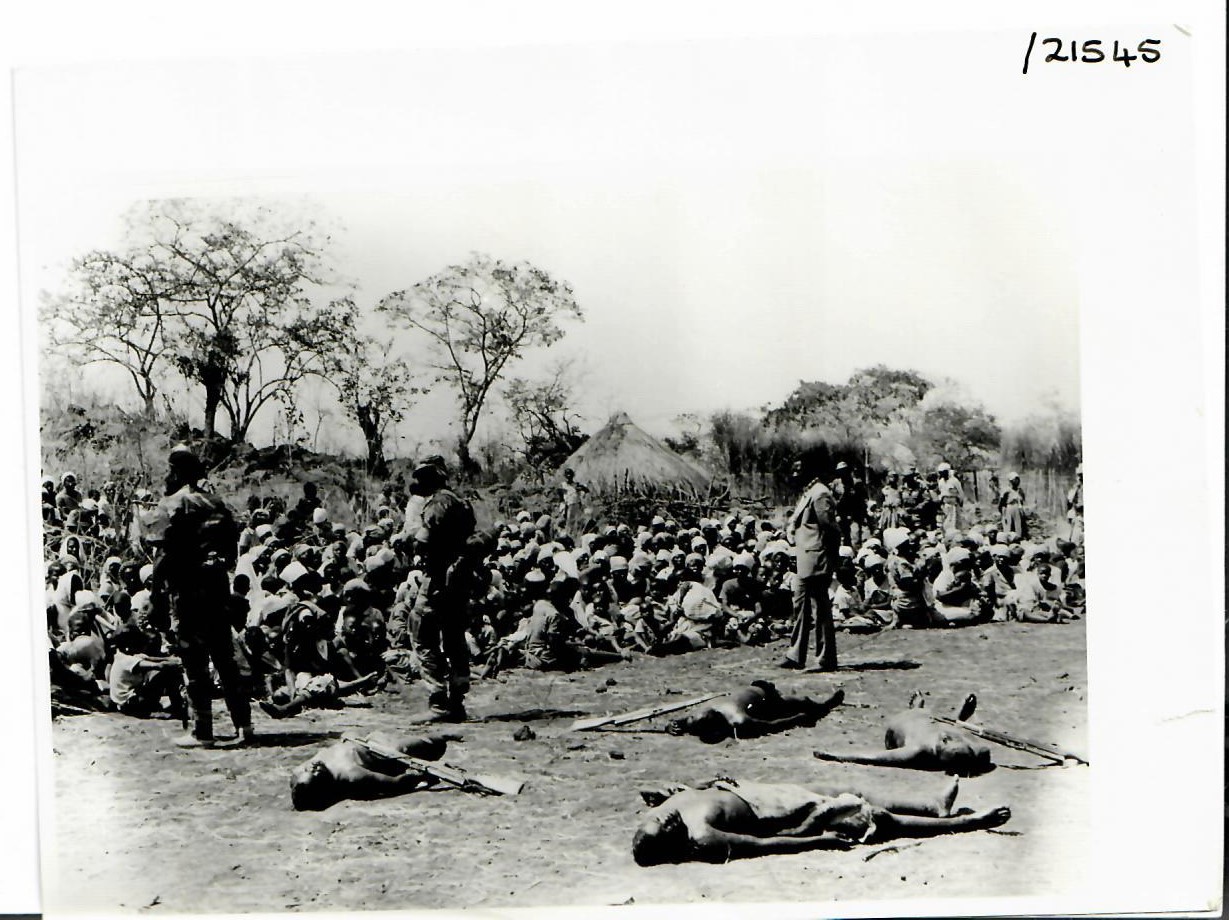


There are some documents that portray patriotism and all that is fantastic, but there are some that are quite violent and hectic, which can be emotionally traumatising to visually and mentally process.
Then there is also the dichotomy of so much history being in one building yet at the same time also incomplete.
Which somehow gives rise to curiosity and the eagerness to continue looking.
Sometimes I find information and other times I don’t, which can be frustrating, but at the same time not so much.

Sharing stories from afar
Due to the Coronavirus you´ve been stranded at Rhodes University in Makhanda, South Africa, yet you managed to go on with your work and prepare everything for your solo show at Künstlerhaus Bethanien. What was this process like for you? Was maybe more intense, did you have different insights and ideas or was it more like finding ways to actually create the pieces?
Being stranded in Makhanda during the lockdown has been both a blessing and a curse. Unfortunately, of course there was panic around how do I finish the work, and install; travel was not possible and even if I had travelled before the Bethanien show there would have been a whole two week quarantine period in which I could not have gone to the gallery. So, the lockdown unfortunately presented logistical nightmares.
On the positive side being stuck here allowed me to work in a more collaborative way. Some of the work would have been difficult or at least different to produce from Germany, like the four channel video. It is not even necessarily the technology that would have been an issue, because we have the perception that Europe is more technologically advanced.
But different in the sense of using materials that have more personal sentimental value and that establish particular kinds of relationship within the work.


In this video, I was working with ideas about women sharing stories, taking time to care for other stories, almost as if creating a performative gesture of memory.
Again because of the lockdown I was only able to work with people around me at the time, so my friends dressed up in chitenges I got from my mother and aunts, that had been worn to funerals. In my last video work I am wearing a chitenge I wore to a funeral as well. So being stuck in South Africa at least allowed me to work in this way and create meaningful connections between this current body of work and past ones.
The other work I had partially created already, and worked hand in hand with the Bethanien team to complete and install.

In a recent artists talk by Gallery 51, you mentioned the barkcloths of Uganda that you are using. What kind of cloth is that and why have you chosen to work with it?
Barkcloth is a fabric made by stripping trees (not cutting them down), then beating the strips into a pulp and flattening them. Afterwards the fabric can be dyed. The ones I used are dyed black, and some are only partially coloured.
This is why I use barkcloth: when I was working on my Master of Fine Arts, my friend Rachel came from Uganda with some barkcloth, which she thought I would love because I was working with ideas of burial cloths.
It turns out that I like to work with fabrics. When researching about the fabric I found out that it was historically used in some parts of Africa such as Uganda and Zambia for different purposes, either as clothes, to wrap dead bodies, and so on.
But eventually the use of barkcloth declined, and it became a symbol of things that get erased over time.
That´s it!

Ephemeral permanence
You are creating fluid monuments instead of marble monuments, which have a very different quality to them. Can you tell us about the narrative you work into your fluid works and how they are set in motion?
When I started working on my show at Bethanien, on gestures of memory, I went around looking at monuments because I am interested in ideas of memory and how we historicise particular events, people and movement.
As you probably know, historical narratives often present a particular perspective, which is to say that most accounts have a particular bias – a bias in terms of gender, perspective, timeline and so on.

Most of the monuments, particularly the ones that include some form of statue or sculpture, are made of marble, bronze or some other material that suggests longevity or permanence.
This theoretical observation sort of became a good point of reference in the making of my show, namely to counter this idea of permanence by exploring fluidity.
I focussed on two tasks: firstly, identifying gestures of memory that were fluid (practices, gestures, etc.) and secondly dealing with materials like fabrics, paper, etc., that can be contrasted against marble.

I think what I was really trying to do is work with materials that seemed ephemeral.
In the show, the work that I would say is closely linked to ideas of monuments is the installation …these wreaths are laid in honour of her memories.
The installation consists of black wooden swings with the names of women printed on them, and flowers placed on them in a darkened room. The swings themselves do not move (except of course if someone pushes them), but because there are materials with the same colour but different textures, as they are lit of course in a particular way, the illusion of motion is created. It is created in making the viewer’s eye have to shift around one the swings and all over the room.
And there is also the motion of their bodies as they move.
Gladys Kalichini is currently occupied with writing her PhD thesis and creating new works during her stay at Künstlerhaus Bethanien in Berlin.
Author: Esther Harrison
